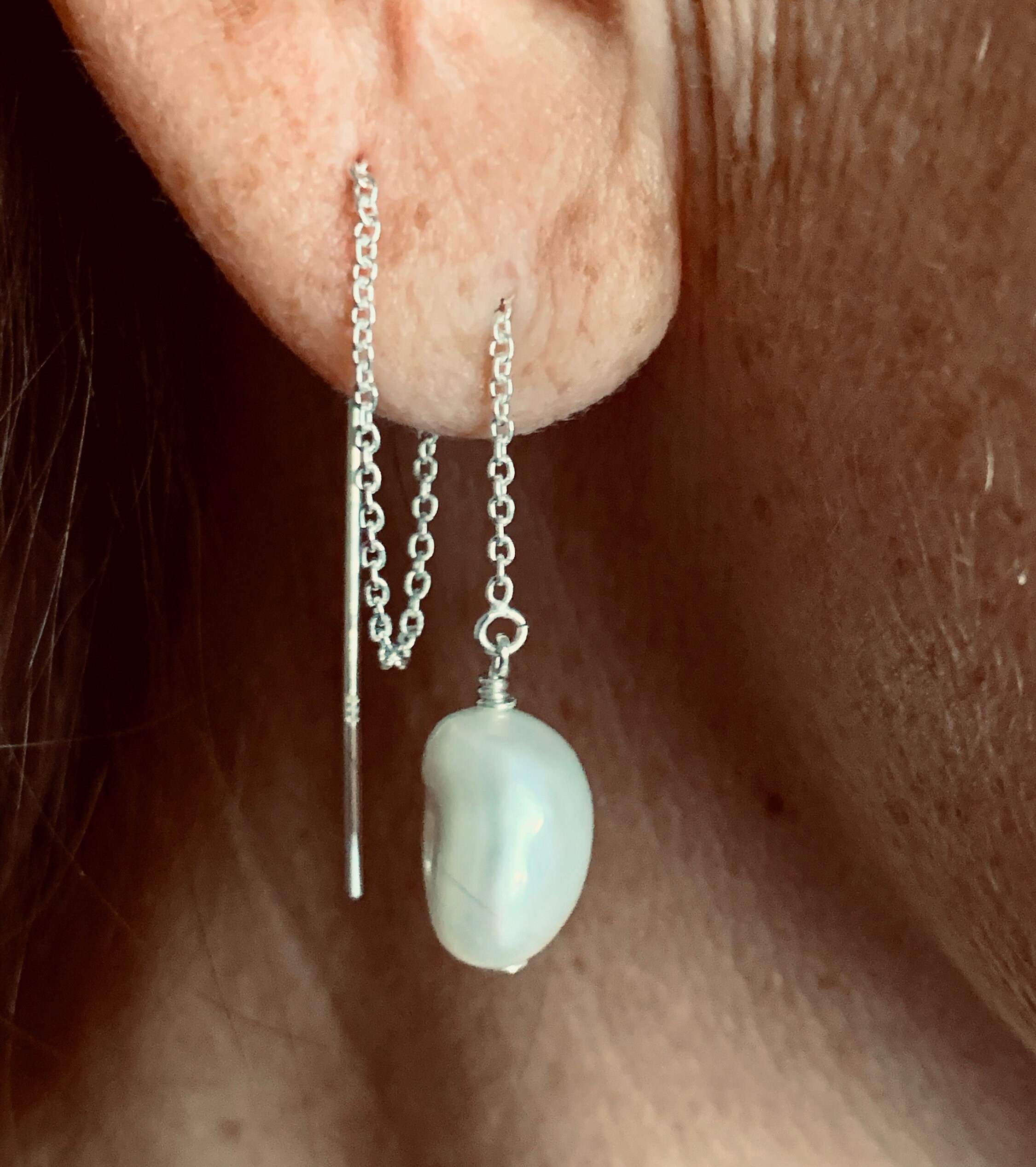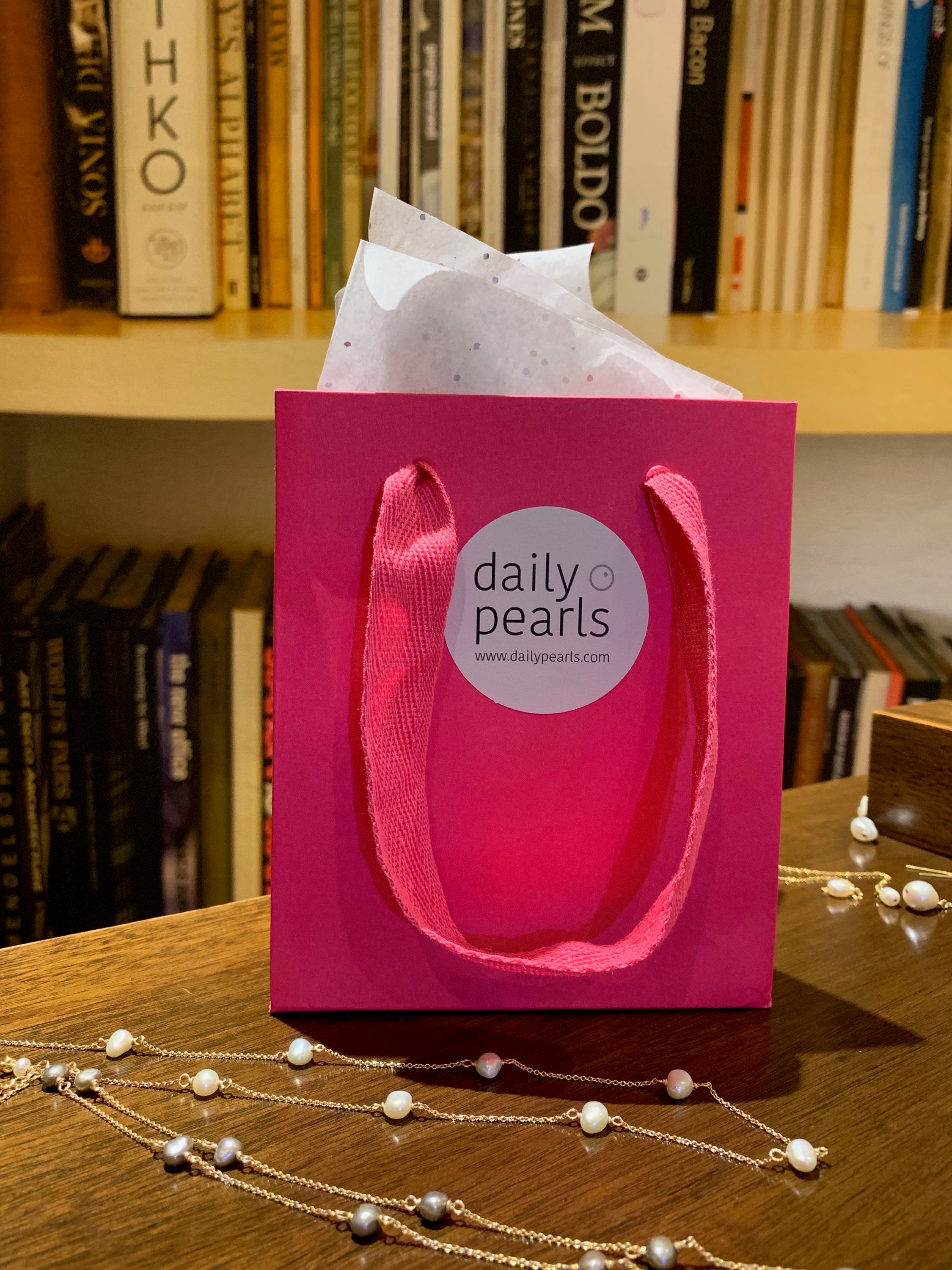White Freshwater Pearl and Sterling Silver Threader Earrings, On-Trend, Minimalist, and Versatile
These sterling silver threaders a bit on the longer side, meaning they have more of a presence on your ear, whether worn long (with the pearl higher or lower than the back), or looped through a second hole.
The freshwater baroque nuggets are white, and measure approximately 10mm x 11mm. The earring components are made with sterling silver, and the length of the threader with pearl is approximately 4.6 inches.
If requested, the earrings will come with a pink gift bag and tissue paper.
To keep your pearls looking their best, remember they should be the last thing you put on and the first thing you take off. Avoid getting perfume, hairspray, lotion, or any other chemical on them, and wipe them off right away if you do. Keep them out of water, where hair products, chlorine, or salt water could dull or discolour them. Water can also weaken the bond between the pearl and the post.
As popular as pearls are, the range of varieties and prices can seem confusing. But it's rather straightforward, and here's what you need to know:
1) Almost every real pearl on today's market, regardless of variety, is “cultured.” A cultured pearl is grown on a farm in an ocean or lake, around develops around a nucleus or irritant placed in an oyster or mollusk. It is created by nature, albeit with man’s help.
2) “Natural” pearls are pearls that have been found in oysters. Natural pearls sell for tens of thousands of dollars, and today are almost always part of antique pieces. They generally come with gemological x-ray certification.
3) The highest-price cultured pearls are cultured in seawater, and there are three varieties: Akoya, Tahitian, and South Sea. Akoya pearls, grown off the coast of Japan, were the first saltwater pearls to be cultured, and became the "classic" pearls your grandmother might have worn. Tahitian pearls, which are farmed around Tahiti, grow naturally in shades of grey and black. South Sea pearls, grown in the Southern Hemisphere, are considered by many to be the most desirable pearls in the world.
4) Daily Pearls makes jewellery from cultured freshwater pearls. Freshwater pearls are the most affordable variety of cultured pearls. China produces most of the world's freshwater pearls, many of which are unusually shaped, hence the name 'baroque.’
5) Plastic or glass imitations of cultured pearls are called “simulated” pearls. You can tell the difference between cultured and simulated pearls by touching one to the top of your bottom teeth. If it feels gritty, the pearl is real. If it feels like plastic or glass, it is not a cultured pearl.
Let us know if we can help you with your pearl shopping!




